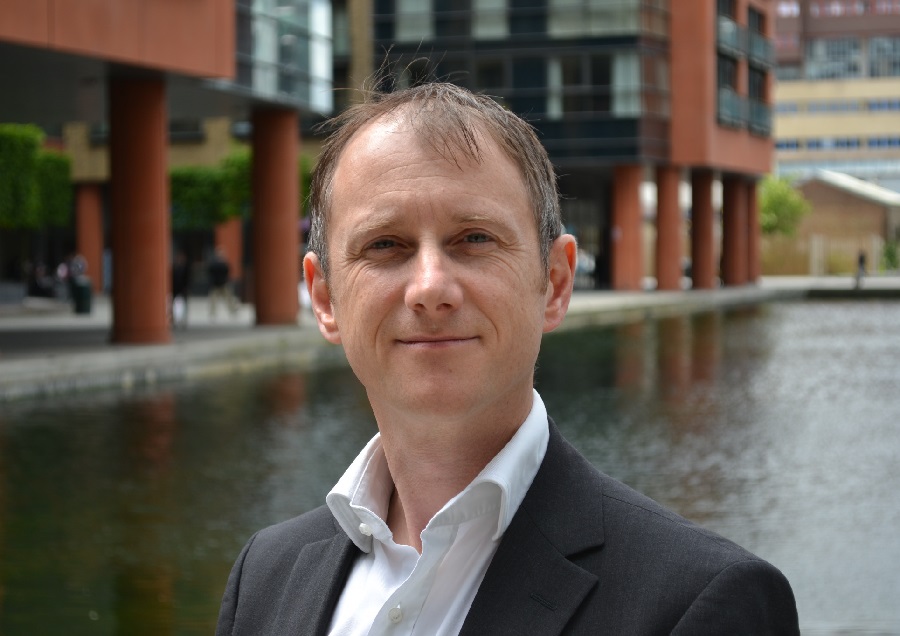The Future of Work Looks Nothing Like the Past

- Alan Campbell, Senior Director & General Manager at UK & Ireland, Nutanix
- 27.04.2022 08:00 am #technology #banking #data
Until quite recently, for most of us, work had changed remarkably little over the years. Owners operated a reward system based on an expectation of mostly fixed hours and amount of work completed. It’s only with the advent of technology that remote working, flexible hours and location-independence have become mainstream. We have moved away from a modern assumption of five days per week, nine-to-five or similar, despite the travel and family-life hassles that this imperfect model involves. But, with cloud now becoming the underlying universal technology platform, we can start to think about re-imagining what a new and improved working model looks like.
I say ‘start’ but, really, it’s already happening. Technology companies, for example, are exiting Silicon Valley, San Francisco and the Bay Area and often not even bothering to maintain a full office suite. They’ve learned that they can do without the cost and bother of insisting highly intelligent and skilled staff meet in one place at specified times. Instead, they’re rejoicing in the ability to hire from any location in the world and seeing productivity and job satisfaction increase. This phenomenon is being mirrored in service industries the world over and in other sectors that today often prefer to hire via a contractor model aligned with the Gig Economy.
‘Office huggers’ (people who insist on the primacy of critical locations and arcane processes) still exist of course. They argue that formal workplaces bring discipline, esprit de corps, creativity and collaboration. With reason, they add that many of us don’t wish to work from home or another space. ‘Going to work’ equals inspiration, camaraderie, learning by osmosis and is a great way to onboard staff and newcomers to the working world, they argue.
That’s a very defensible position but then few organisations, outside of startups and boutique operations, are pushing the button on a laissez-faire approach that gives people carte blanche to set their own parameters. Rather, what we are seeing is a shift to new working schedules, frameworks and processes that will be analysed on a trial-and-error basis. The future is surely hybrid: there are often very good reasons for meeting colleagues and sharing a common space, but not making that the only way to work brings flexibility, the chance to perform other tasks and learn other things, more time spent with loved ones and a sense of freedom that is liberating and healthy for our spirit.
It’s also fun to speculate about what work looks like further out. Already, many countries are offering preferential taxation terms for digital nomads, extending the prospect of a future where we work from sunny climes and the after-work pint in the pub is replaced by a sundowner on the beach. Having become accustomed to Zoom and Microsoft Teams, online meetings providers are looking into replacing our 2D grids with 3D, avatars and a simulacrum of the real world. Perhaps we will change the old paradigms and work shorter weeks, as some companies are using to lure prospective employees. In a world where hiring and retaining talent is critical, there may be other attractions: early retirement, career breaks, regular retraining and so on.
What we can say is that there are positives to be gleaned. Old Work was dirty and not sustainable but New Work can be better. Today, smart, progressive organisations are thinking afresh about what office spaces mean. They are pondering whether offices are not so much central hubs where drudges congregate and demonstrate presenteeism as places to meet, celebrate, share, ideate, brainstorm and spark off innovation. This will mean the phasing out of fixed desks, desktop PCs and phone lines and usher in the dominance of more open-plan spaces with bump zones: architecturally designed spots such as stairwells and water cooler or kitchen areas for spontaneous meetings.
Zones will be set aside for conferencing, whiteboarding and socialising and workplaces will look more like clubs than hives for human beings.
There are big implications for how we manage ICT here. An example: delivering end-user computing via server-based control, virtual desktops and thin client endpoints can be a far more flexible and greener model than the general distribution of laptop or desktop PCs. And of course, the effect of reduced commuting will also save on fuel, congestion and emissions. So, there is a double advantage to be had, consisting of a simpler and more efficient IT setup and a kinder, more sustainable model too.
Some companies such as South Africa’s largest bank, Nedbank, are bolder than others. Nedbank said early this year that it was going all in on a radical new cloud-based approach designed to cope with changing bandwidth needs such as low-latency remote worker provision. It’s aim: to provide employees and a 2,000-strong developer function in India with a “superior service” and a “win-win" for staff and customers too.
Nedbank represents a future where flexibility, rapid service, reliability, performance, low-carbon footprints and utility-based billing are central. In ICT terms, that means a hybrid approach where users are served across a gamut of models and IT can centrally provision based on changing needs and without compromises to data protection or quality of service. It will be scalable, re-stackable, time-saving and cost-effective with the ability to add and subtract devices easily. A Forrester survey reported that a life sciences company saw a 90 per cent reduction in time to provision devices.
As we consider the future of work, the subject of ‘where’ remains front of mind. However, when imagining the future, it would be remiss to not also consider the ‘how’ and the ‘why’. Artificial intelligence and chatbots are now interwoven into many everyday jobs, the increasing use of automation undoubtedly impacts the content and scope of our work and the possibilities emerging thanks to human-machine partnerships seem endless.
This, I bet, is the future: a world where we work in ways that are most effective and kinder to the environment and to human needs and where technology supports smarter ways to get the job done. There will be bumps along the way, but we will get there.






















